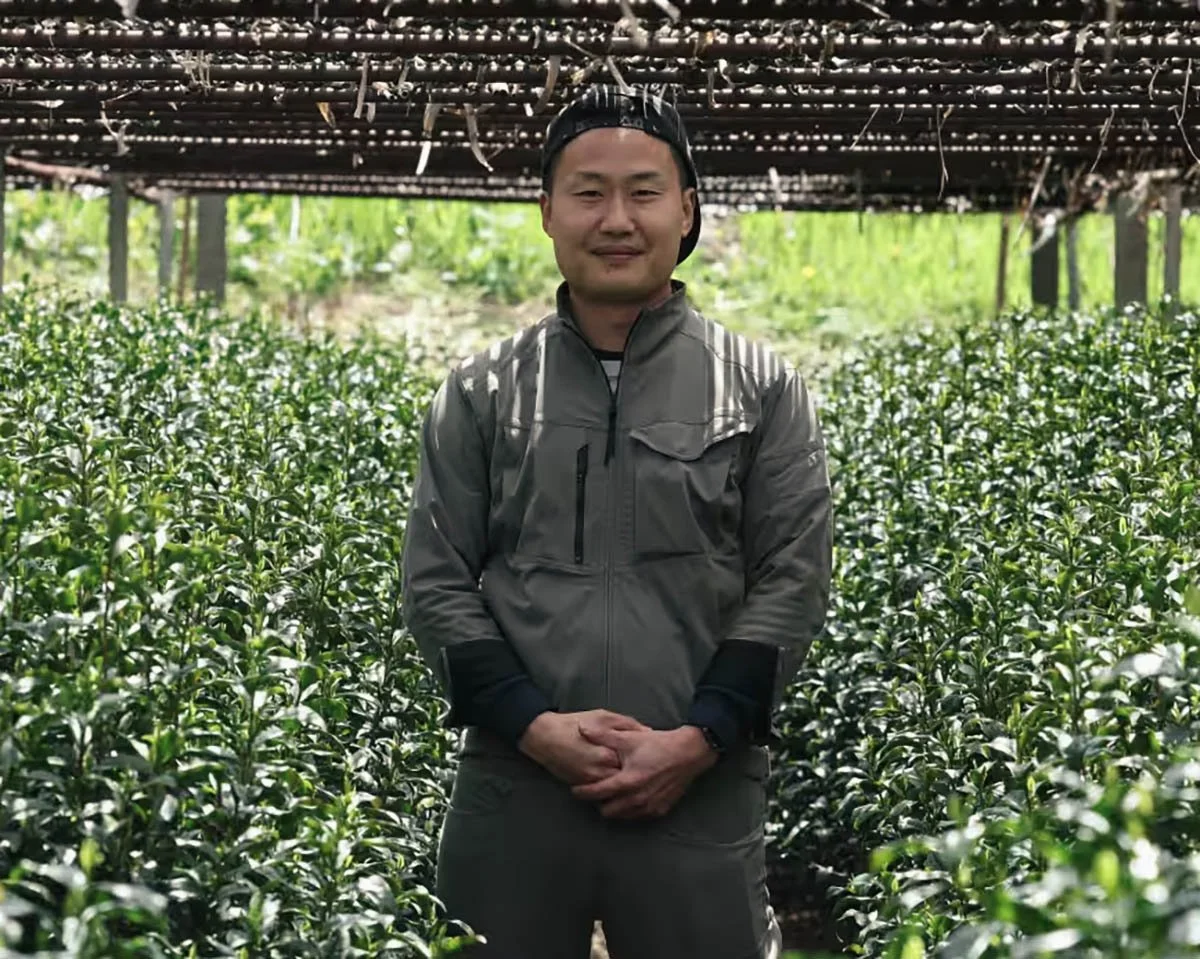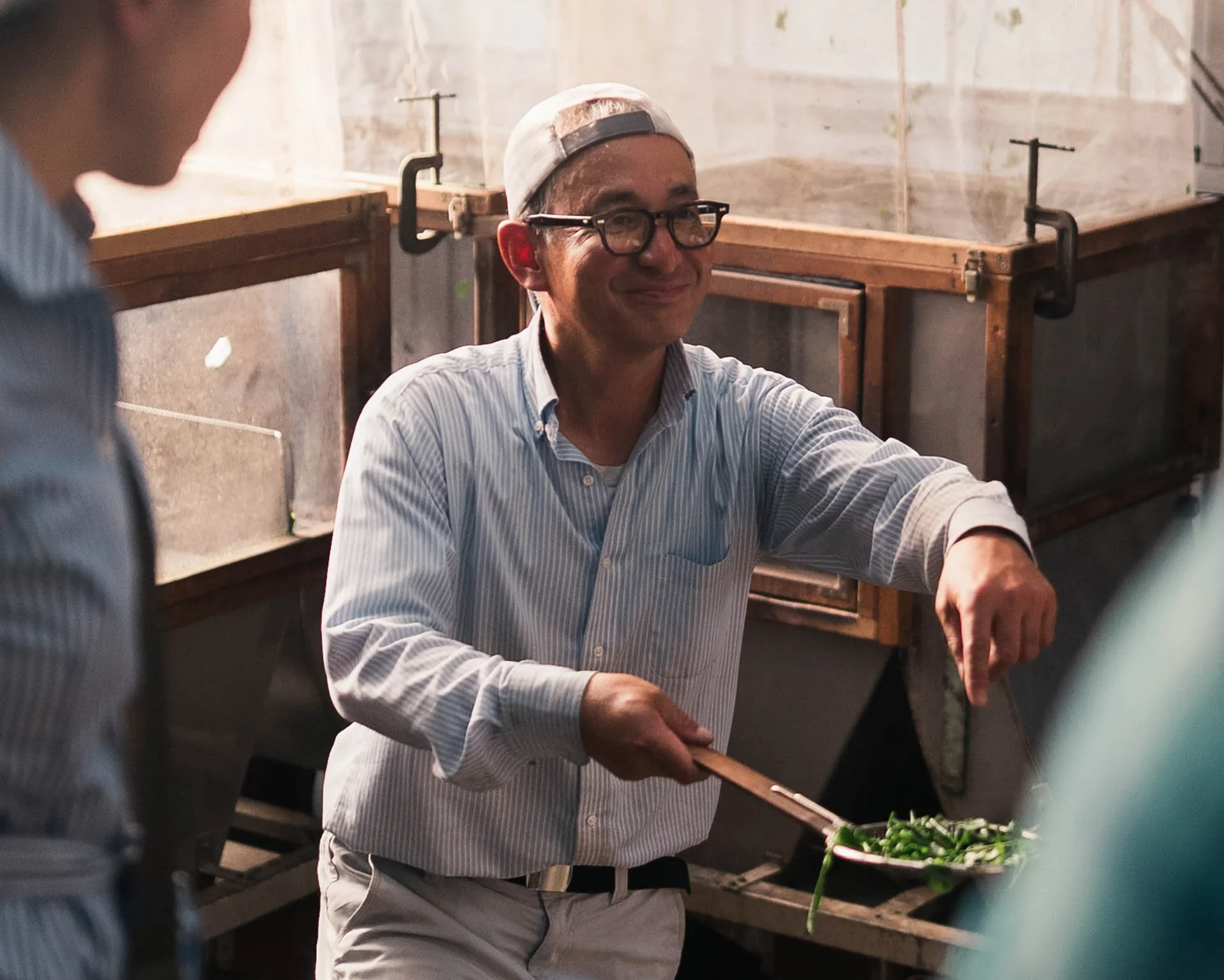Why Prices Are Going Up For Matcha (2025)
Matcha Industry Report is Ooika's monthly coverage of the Japanese tea industry, specifically Matcha. Join our newsletter here to keep up to date.
In 2025, global demand for matcha is booming, production faces challenges, and high-quality leaves are scarce. Let’s dive into the reasons behind the rising cost of matcha.
We have interviewed 2 significant Tencha farmers in Kyoto to explore why the world’s favorite green tea is becoming more expensive. They are Mr. Jintaro Yamamoto and Mr. Shuya Sakata.
How the Auctions Affect Prices
Auction prices serve as a benchmark for Japanese Tea markets, reflecting the value of brand teas such as Shizuoka tea and Kyoto Uji tea.
The bid success rate and the level of winning bids indicate market demand and the scarcity of supply, influencing the sales strategies of tea wholesalers and manufacturers. Conversely, if auction prices stagnate, downward pressure is placed on wholesale and retail prices.
Closing the deal for Uji tea harvested in 2025
The "Chatomeichi" tea market, which marks the final day of trading for the 2025 Uji tea harvest, was held on the 1st August at the JA Zennoh Kyoto Uji Tea Distribution Center in Terada, Joyo City, Kyoto Prefecture. The total transaction amount was 9.629 billion yen, nearly double the previous year's record high (total transaction amount in 2024: 4.6 billion yen), significantly breaking the previous record.
Total Transaction Volume
The total transaction volume was 939.3 tons, down from 1,126.8 tons last year. This was due to the drop in nighttime temperatures in mid-to-late April this year, which hindered tea growth. The average price per kilogram was 10,251 yen, a significant increase from 4,089 yen last year, pushing up the total transaction amount.
Transaction Value of Tencha
Here’s a few numbers to keep in mind regarding the prices of Tencha (unground Matcha) this year.
The transaction value of Tencha, the raw material for matcha, was 8.685 billion yen, with a volume of 676.4 tons.
The average unit price for machine-harvested Hatsucha Tencha rose to 14,141 yen (5,411 yen in the previous fiscal year.)
The average price for high-quality hand-picked Uji Tencha soared to 47,096 yen (20,024 yen in the previous fiscal year).
In addition to increased demand due to an increase in inbound tourists and expanded exports, a decrease in transaction volume led to the rise in unit price. The story is the same with Nibancha.
Growing Popularity of Matcha
The matcha boom continues both domestically and internationally, causing prices to skyrocket.
According to the JA Zennoh Kyoto Tea Industry Market Division, the growing popularity of matcha has led to an increase in farmers switching production to tencha, and the volume of sencha and gyokuro handled has fallen from the previous year.
Interviewing Jintaro Yamamoto, a 6th-Generation Tea Farmer in Uji
Kyoto Uji Chabo Yamamoto Jinjiro is a traditional tea farm in Uji with a history spanning over 400 years, currently operated by the sixth-generation owner, Jintaro Yamamoto.
The tea house features a storefront built in 1848 (Kaei 1) and an adjoining tea processing factory from the Taisho era, both of which are registered as Important Cultural Landscapes of Japan.
Mr. Jintaro Yamamoto practices the traditional cultivation method known as “Honzu cultivation,” passed down in Uji for over 400 years. By using shading with reed screens and straw, this technique imparts the tea leaves with a unique aroma and color.
Jintaro Yamamoto. Source Nikkei.
1 - Why Matcha Prices Are Rising in 2025
Yamamoto believes the main reason is the global boom in matcha, which has driven up demand and, in turn, the cost of raw materials. In their case, rising costs of supplies, energy, and labor are also contributing factors.
2 - Impact on the 2025 Tencha (Matcha) Harvest
In Yamamoto’s tea fields, they were able to harvest the same volume as last year (2024). However, in recent years, unpredictable weather has made tea cultivation increasingly challenging.
3 - How Has the Matcha Shortage Affected You This Year?
They have managed to secure enough tea for sales at their own shop. However, they have had to ask their wholesale partners to reduce the volume of their purchases, and unfortunately, we are unable to accept any new wholesale requests at this time.
4 - What Challenges Do You Face as a Tea Farmer Going Forward?
Since their tea garden uses traditional cultivation methods and hand-picking, it is extremely difficult to increase production volume. Therefore, they focus on consistently producing the highest quality tea possible. They believe that this dedication will help preserve and protect the reputation of Uji tea.
Interviewing Shuya Sakata, a 5th-Generation Tea Farmer in Kumiyama
Mr.Sakata uses tea leaves that are hand-picked using the traditional under-cover cultivation method. In addition, the tea factory strictly controls the steaming time and drying temperature, practicing processes that maximize the color and aroma of the tea leaves.
In particular, Tencha made from varieties such as "Samidori" and "Saemidori" has received high praise at tea tasting competitions and is popular with tea lovers overseas.
Shuya Sakata.
1 - Reasons for the Rise in Matcha Prices in 2025
In recent years, they are delighted to see that matcha has become increasingly popular overseas, with demand continuing to grow. On the other hand, domestic production has been declining, and supply cannot keep up. In addition, the rising costs of fertilizers, materials, and labor have further contributed to higher prices.
2 - Impact on Tencha (Matcha) Harvest in 2025
This year, unstable weather—including high temperatures and irregular climate conditions—has also had an effect. As a result, harvest volumes are expected to be lower. In particular, hand-picked Tencha, which is limited in quantity to begin with, will become even more scarce.
3 - Effects of Matcha Shortages
Since they are unable to secure enough supply to meet demand, we may not be able to fulfill all orders. Consequently, they may have no choice but to request adjustments to order quantities or a review of prices. While inquiries from overseas are also increasing, it remains very difficult to secure sufficient stock.
4 - Challenges as Tea Farmers
The biggest challenge is maintaining quality. With climate change, labor shortages, and rising material costs, there are many issues to overcome. Among them, how to continue preserving traditional practices such as hand-picking and the production of high-quality tea—which have been valued for generations—will be one of the greatest challenges we face moving forward.
Conclusion
Matcha prices are rising in 2025 due to strong global demand and limited high-quality supply. Prices are likely to keep climbing as demand grows and production remains constrained, especially for premium Matcha, like the recent winners of the Kansai tea Competition.
For readers wondering if prices will continue to rise, the answer is likely yes. Global interest in matcha shows no sign of slowing, and production constraints—especially for top-quality Tencha—mean supply will remain tight.
Unless new cultivation methods, expansion of tea-growing regions, or innovative processing techniques are introduced, the upward trend in prices is expected to persist, at least in the near term.
For consumers and businesses alike, understanding these factors can help manage expectations and plan for the evolving matcha market.
AI Statement No AI was used in the creation of this content. All Ooika articles, content, emails and more are written and reviewed by real people.








Learn what’s happening in the world of Japanese Matcha with Ooika’s Matcha Industry Report from October 2025.